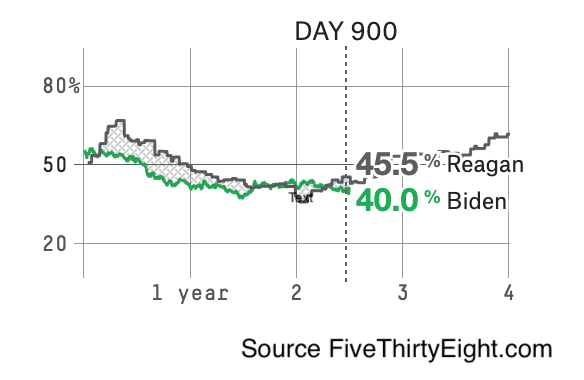- Facebook18
- Twitter1
- Total 19
In an article reporting The New York Times‘ recent battleground state polls, Lisa Lerer and Ruth Igielnik quote Jonathan Ball, a Michigan floor-installer:
[He] said he believed Mr. Trump would do more to help working Americans than Ms. Harris. “I think she’s more liberal. I just don’t think she’s all for the middle class,” said Mr. Ball, 46, who plans to support Mr. Trump for a third time this fall. “I just see her one-sided. You know, for the rich.”
I don’t know how many people associate being liberal with being from (or for) the rich. I would like to see survey data specifically on that question, which would allow us to measure the prevalence of this view in various parts of the electorate. But we know that Mr. Ball’s view is not unique. In her book American Made: What Happens to People When Work Disappears, Farah Stockman discusses an Indiana industrial worker who divides the world between workers (such as himself) and capitalists, urges his union to fight the company, and votes for Trump. His wife is more favorable to management. On that basis, he categorizes her as a “liberal.” I’ve heard real people say the same kind of thing myself.
I grew up believing the opposite: that liberals were more favorable to workers than conservatives were. I acknowledge that this assumption is debatable. Libertarians argue that liberal policies are especially costly to working people. Socialists may distinguish bourgeois liberalism from more radical reform and sometimes see liberals as the main obstacles to social justice. But I doubt either framework is driving these workers’ interpretation of liberalism as favorable to the upper class.
Here is an alternative theory. If you are a worker and a consumer, you are always being notified of rules and policies that constrain and modify your behavior. Some of these rules result from governmental policies that I would code as “liberal.” For instance, the state might pass a law that results in your HR department warning you against sexual harassment. Some of the rules come from government but are not especially liberal, e.g., Don’t use marijuana. And many are not due to the government at all. For example, the same HR department that warns you not to sexually harass your colleagues also warns you not to take unauthorized breaks and not to use the company’s equipment for private purposes.
The tone, format, and consequences of all these rules are similar. The same people deliver and enforce them. These people are managers: white-collar workers with college degrees, sometimes from the corporate HQ in a big coastal city.
They talk and act rather like the most prominent advocates of liberal policies. First of all, politicians in general come from the same professions that set and enforce rules in the workplace. Nicholas Carnes notes that 75% of members of Congress were lawyers or business owners before they ran for office, compared to less than 2% who “came [directly] from working class occupations. … Even districts where working-class people make up disproportionate shares of voters seldom elect working-class politicians” (Carnes 2011). And, among politicians, Democrats are perhaps especially likely to sound like upper management. For instance, Democrats now represent the 17 richest congressional districts.
You’d have to be very politically sophisticated to separate the directives that result from liberal (or progressive, or leftist) governmental policies from those that are meant to profit the company. They all sound like the wishes of highly-educated and well-paid people at corporate headquarters. And the national leaders who advocate for the policies that are liberal sound just the same as your corporate managers.
Regulations can be beneficial and even necessary, but they are not very transparent. It is hard for the recipients to understand who is responsible for a given regulation; and legislators can’t be sure who will be affected, or how. Laws must go through regulatory agencies, courts, and private offices (like a corporation’s HR department) before they reach the people who are regulated, by which time the legislators who voted for them may not recognize the results. And workers and consumers receive a constant stream of directives that reflect companies’ wishes rather than legal mandates.
I am more enthusiastic about taxing and spending as tools of public policy. And I prefer direct, transparent taxes, especially taxes on personal income, rather than sales taxes, tariffs, or corporate income taxes, which have opaque and unpredictable costs for various people. We should be able to say: We compelled these people to pay this proportion of their incomes to buy these goods, which include new jobs for working people.
As long as we deputize private actors to regulate behavior, we must try to mitigate the resulting confusions. Small steps may be worth taking, like nominating Tim Walz instead of yet another big-city lawyer to be a face of the Democratic Party. But the problem may be endemic to the administrative state, in which case it requires more than cosmetic changes.
See also a conversation with Farah Stockman about American Made: What Happens to People When Work Disappears; class inversion as an alternative to the polarization thesis; beyond Chevron



